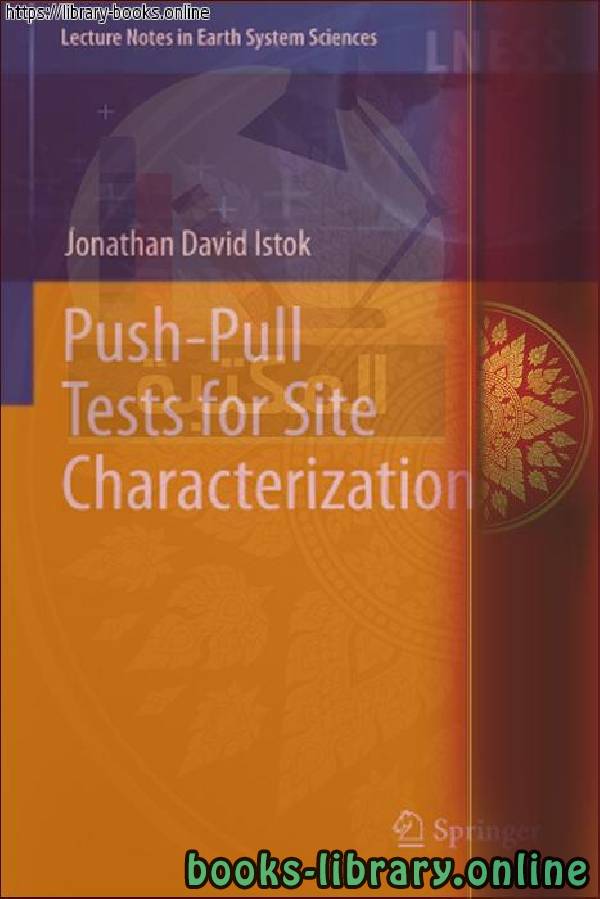📘 قراءة كتاب اختبارات الدفع والسحب لتوصيف الموقع أونلاين


Biologically
Biology is a natural science that is concerned with the study of life, its various forms and its function, how these organisms interact with each other and with the surrounding environment. The word biology in Greek is made up of two words: bio (βίος) meaning life. And loggia (-λογία) means science or study. Biology: the similarity of vegetation and animal cover on the edges of the African and American states, and the existence of the same fossil.
Branches of biology
Biology is an ancient science thousands of years old and modern biology began in the nineteenth century. This science has multiple branches. Among them are:
Anatomy
Botany
Biochemia
Biogeography
Biofisia
Cytology or cell science
Ecology or environmental science
نبذه عن الكتاب:
This book has described and hopefully demonstrated that the single-well, push-pull
test, in all its various manifestations, is a useful tool for site characterization, pilot
testing of various remediation strategies, and so on. The advantages of in situ
testing are clear, and the push-pull format makes it possible to perform field
experiments at relevant scales for a modest cost and with no more logistical
complexity than a laboratory experiment. Often in the biogeochemical sciences,
we think of research as a linear process from small-scale laboratory development to
ultimate (usually at a date a long way off) full-scale field application. However,
using the push-pull test it is possible to conduct field experiments in parallel with
laboratory experiments and this should lead to better synergy between the two.
Simple field experiments have the remarkable ability to sharpen experimental
design by identifying the most important parameters to control in laboratory
experiments and to quickly select the most promising small-scale procedures and
techniques to further develop in the laboratory. Nevertheless, much developmental
work on the push-pull test format remains to be done. Additional numerical and
analytical methods for interpreting push-pull test breakthrough curves for the ever
more complicated biogeochemical systems being studied are needed. The design of
push-pull tests can be refined to incorporate valuable auxiliary data such as isotopic
composition of test solutions, microbial community dynamics, surface chemistry
reactions, and so on. To date, only a limited number of push-pull tests have been
conducted (using gas phase tracers) in the vadose zone and these have focused on a
single microbial process (methane oxidation). Most push-pull tests have been
conducted in the near surface (<100 m deep), but the test is potentially most
valuable in deep subsurface environments where the costs of drilling for sample
collection are very high. Thus, push-pull tests in deep boreholes on land and
beneath the seafloor hold great potential in elucidating important biogeochemical
processes in those environments. Combining push-pull tests with various geophysical imaging techniques also holds great promise because of the ability to modify
the subsurface environment (e.g., by injecting electrolytes that can be detected by
electrical conductivity arrays) in defined ways and thus identify preferential flow
paths, reactive surface areas, etc.
Biology
Human biology
Who is the founder of biology?
The importance of biology
Areas of work in the field of biology
Theories of biology
Research on biology for the first grade of secondary school
Human biology
سنة النشر : 2013م / 1434هـ .
حجم الكتاب عند التحميل : 1.655 .
نوع الكتاب : pdf.
عداد القراءة:
اذا اعجبك الكتاب فضلاً اضغط على أعجبني و يمكنك تحميله من هنا:

شكرًا لمساهمتكم
شكراً لمساهمتكم معنا في الإرتقاء بمستوى المكتبة ، يمكنكم االتبليغ عن اخطاء او سوء اختيار للكتب وتصنيفها ومحتواها ، أو كتاب يُمنع نشره ، او محمي بحقوق طبع ونشر ، فضلاً قم بالتبليغ عن الكتاب المُخالف:
 قبل تحميل الكتاب ..
قبل تحميل الكتاب ..
يجب ان يتوفر لديكم برنامج تشغيل وقراءة ملفات pdf
يمكن تحميلة من هنا 'http://get.adobe.com/reader/'


 منصّة المكتبة
منصّة المكتبة 